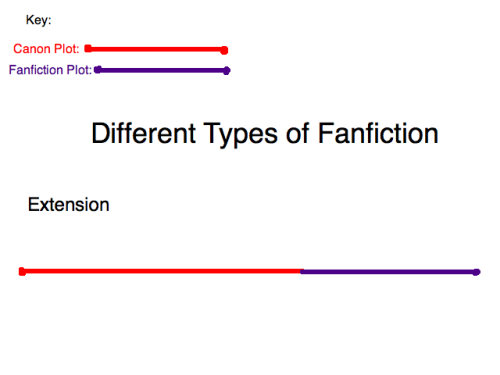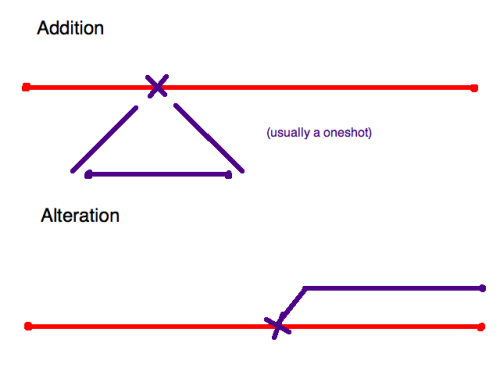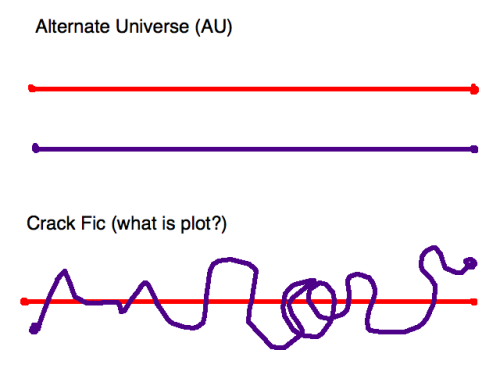I Say That But I Don't The File With The Names Of The Different Characters Lmaooo I'm So Stupid
I say that but I don't the file with the names of the different characters lmaooo I'm so stupid
Time to try writing the closet on fire ai guess
More Posts from Lokisbur and Others
When reading fanfic keep in mind that for professional literature:
Short story: under 7,500
Novelette: between 7,500 and 17,500
Novella: between 17,500 and 40,000
Novel: over 40,000
Fics over 40k are literally a novel written and shared for free. If you have written a 40k+ fic, you have literally written a novel.

Neon pondering his Subatomic Supern(orb)va
No idea how to fix that without throwing through the window hours of work.....
There’s a fic on fanfiction(.)net that I’ve kept tabs on for years to see if it’s been updated or not. While I’m no longer even in the fandom it’s written for, it just has one of the greatest storylines I’ve ever read. Last time it was updated was 2011.
The other day, I decided to reread the entire thing and leave a very in-depth review of what I thought of each chapter. I also mentioned how I started reading it when I was 13 and am now 21, but always came back to see if it was ever finished because I loved it so dearly.
Today, said author sent me a private message saying that her analytics showed that the story was still getting views even after all these years, but no one ever bothered to leave reviews other than “update soon!!!”, so she never felt motivated enough to finish it. She said that me reviewing every single chapter with lengthy paragraphs made her cry and meant the world to her. She also mentioned that she felt encouraged to write the two remaining chapters needed to complete the story and that she would send me a message the night before she updates the fic.
I’m literally sobbing. I’m so excited :’)
Please always remember to leave a review when reading fanfiction!!! It means a lot to a writer.
Chapter: 1/1
Words: 591
Language: English
Fandom: 非人哉 | Fei Ren Zai (Cartoon), 非人哉 | Fei Ren Zai (Manhua)
Rating: General Audiences
Warnings: No Archive Warnings Applies
Relationship: Guanyin/Yangjian, Guanjian
Characters: Guanyin (Fei Ren Zai), Yangjian (Fei Ren Zai)
Peak brain: making the character have an assumption on people's gender at the beginning then slowly moving to them using neutral to refer to strangers because of growth.
Time to try writing the closet on fire ai guess
writer survey question time:
inspired by seeing screencaps where the software is offering (terrible) style advice because I haven't used a software that has a grammar checker for my stories in like a decade
if you use multiple applications, pick the one you use most often.
writer survey question time:
inspired by seeing screencaps where the software is offering (terrible) style advice because I haven't used a software that has a grammar checker for my stories in like a decade
if you use multiple applications, pick the one you use most often.
Editing Checklist
Editing Software:
StyleWriter 4 is fantastic. It’s an add-on for Microsoft word and has a 14-day trial period. It goes through your text, picks out “glue words”, misspellings, long sentences, homonyms, passive tense, shows your reading grade level, and more.
Editminion *FREE* checks for adverbs, weak words, passive voice, cliches, and homonyms among other things.
Pro Writing Aid is another online editor. It is mostly free, but offers more features if you pay.
AutoCrit offers free analysis for under 500 words, otherwise you have to pay for more text and more editing features.
Paper Rater offers a free service for editing, but it is designed for essays.
Formatting Checklist: This follows the general guide of formatting a manuscript in Microsoft word. However, some literary agents and editors have their own requirements.
Under the paragraph option, change the special indentation to first line at .5”. Change to document to double spaced.
There should be no spaces between paragraphs.
When showing a scene break, center # on a blank line.
Font should be easy to read. Courier New and Times New Roman are preferred at size 12.
All margins should be 1”.
Start chapters on a new page and put the chapter title 1/3 down the page. Write the chapter like so: CHAPTER ONE - CHAPTER TITLE. Press return 4 - 6 times before starting the text of the chapter.
For the header, put YOUR NAME/BOOK TITLE/PAGE NUMBER in the upper right-hand corner. Start this header on the first page of the first chapter.
The cover page of your manuscript should have your name, word count, and contact information in the upper left-hand corner.
The title on the cover page should be in all caps. Your name should be underneath in all caps. If you use a pen name, write YOUR REAL NAME (WRITING AS PEN NAME).
At the end of the manuscript, start a new page and write END.
Self-Editing Checklist:
Spelling:
If you are using Microsoft word for your word processor, use the spell check. After that, go through the manuscript line by line to make sure everything is spelled right. You may have used “form” instead of “from” and skipped it because Microsoft word did not see it as misspelled.
Printing out your work or viewing it in another way (such as a pdf on an ereader) helps find these mistakes.
Beta readers can find what you missed as well.
Use editing software to check homonyms or look up a list of homonyms and find them in your document using ctrl + f. Check these words to make sure you used the right spelling.
Grammar and Style:
First use Microsoft word’s grammar checker, but be aware that it is not always right. Check grammar girl if you are unsure.
For dialogue, you can always pick up a professionally published book and look at how the dialogue tags are used, where commas are placed, and when other punctuation is used.
If you’re in school and your English teacher isn’t too busy, have them take a look at it.
Look out for prepositions. Most of the time, you can omit these words and the sentence will still make sense. Beginner writers use a lot of these in their writing and it slows the flow.
Check for adverbs. You’d be surprised at how many you use in your writing, sometimes up to five a page. Using a few in narration is okay, but only a few. Delete adverbs you find, especially those that end in “-ly”, and rewrite the sentences in necessary.
Delete gerunds and forms of “to be” if writing in past tense. Instead of “were running”, write “ran”.
Check subject-verb agreement.
Use correct dialogue tags. People don’t bark their words. They shout.
Two digit numbers should be written as words (twenty-seven) while numbers with more than two digits should be written with numbers (123).
Avoid passive verbs.
Vary sentence length.
Show with the five senses rather than telling.
Most of the time, you can delete the word “that”.
Avoid using “unique” or “significant” words too often.
Consistency:
Make sure all your font is the same size and type.
Make sure you have no plot holes. Use the comment feature in Microsoft Word to track these plots.
Make sure your time line is consistent.
The tone should fit the scene.
There should be one POV per scene. Unless you’re a brilliant writer and can pull off third person omniscient.
Verb tense should be consistent.
Keep track of the details you release of people, places, and things. The reader will remember if in one chapter you say your protagonist has blue eyes and in another you say green.
Pacing:
The whole book should flow in and out of fast paced scenes to keep your reader interested and slow scenes to give them a break.
The middle should not “sag”.
Sentences should flow smoothly.
Plot:
Keep track of all your plots and sub-plots. Readers will remember them.
There should be a beginning, middle, and end.
Is the initial problem at the beginning of the manuscript?
There should be at least one antagonist. This does no have to be a person.
Is there enough conflict?
There should be a resolution.
All scenes should have something to do with plot.
The climax should be the most exciting part.
Character:
The protagonist should change by the end of the book.
Make sure all characters who come in contact with one another have some kind of relationship, whether good or bad.
Characters must have motivation for everything.
The protagonist must want something right from the start of the conflict.
The protagonist needs to be captivating. The readers wants to root for the protagonist. This does not mean the protagonist needs to be likable all the time.
The readers likes to relate to characters. Make sure your characters are diverse enough that readers can identify with one.
Know who your protagonist is. The main character is not always the same. For example, Nick in The Great Gatsby is the main character, but Jay Gatsby is the protagonist. This is important to know while writing your query letter.
If you can delete a minor character from a scene and nothing changes, then delete that character.
Sometimes you can make two minor characters one without losing any essential parts of the story. If you can, do this.
All characters react and act.
Each character has his or her own life.
Dialogue:
Dialogue should be believable. Read it out loud.
Don’t go overboard with phonetic spelling if a character has an accent.
Dialogue should be informal and natural. It does not have to be grammatically correct.
Prose:
Avoid purple prose. I’ve never met anyone with “emerald eyes” or “hair of fire” (except for the Flame Princess).
Don’t use too many adjectives.
Avoid cliches.
Other:
Don’t info dump. Pace information through dialogue and narration.
The first sentence should spark interest, or at least the first three. If it does, the first paragraph should be the same. And the first 250 words. The goal is to get the reader past the first page.
Let your story rest. When you’re ready to edit, start at the end. Writers tend to get lazy at the end of their story whether they are writing it for the first time or revising it after revising the rest of the story.
Make sure your manuscript is within range for your genre’s word count.




I don’t know if anyone has ever done this before but, here ya go… The Different Types of Fanfiction!
I probably left a few out, but these are the most common, compared to their base fiction’s canon plot. Enjoy! XD
-
 lokisbur reblogged this · 3 years ago
lokisbur reblogged this · 3 years ago -
 lokisbur reblogged this · 3 years ago
lokisbur reblogged this · 3 years ago -
 lokisbur reblogged this · 3 years ago
lokisbur reblogged this · 3 years ago -
 lokisbur reblogged this · 3 years ago
lokisbur reblogged this · 3 years ago

xey/xem French Don't be fooled, I'm a platypus, I don't much stuff (art side account)
288 posts